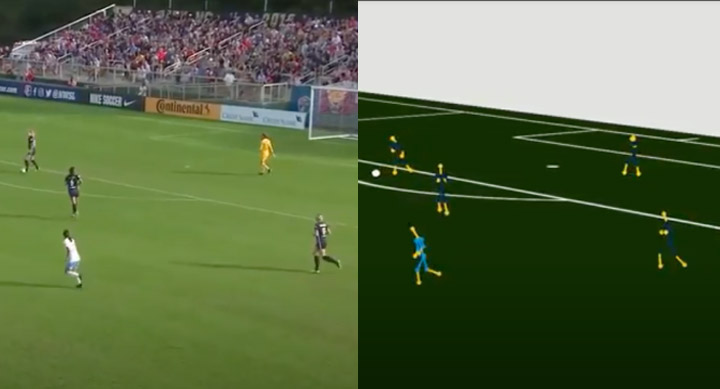Women outperform males, whites outperform Africans – this is what football looks like when unconscious biases are removed

During the 2018 World Cup, writer Zito Madu observed that the commentators for the Poland-Senegal match were based on ethnic preconceptions that did not reflect the reality on the pitch.
“Poland spent the whole game attempting to cope with the speed and physical power of the African team,” is a typical match critique that sounds silly and is based on the stereotype of African speed and strength and white footballers’ brains and discipline.
Sportlogiq, a Canadian sports data supplier, has created technology to animate sports broadcasts, converting football players into 2D figurines.
As a result, the race of the competitors has no effect on the spectators’ cognitive processes.

70 percent of the 47 observers who saw a 2-minute video of the Poland-Senegal game without animation believed Senegal was more athletic and speedier.
58 people saw an animated depersonalised rendition of the same two minutes of gameplay, with no idea who was playing or what colour their skin was. Poland was seen as a better athletic squad by 62 percent of those polled. The physical edge that African teams were known for vanished along with their skin tone.
There were no significant differences in strategies and approaches between viewers of traditional video and animation.
For decades, the media has depicted African players in contrast to European organisations as strong, robust, powerful, explosive, and massive. Romelu Lukaku stated that when he is compared to other forwards, it is always based on anthropometry rather than technique.
Women outperform men
Gender prejudice is another type of bias. The study included 2-minute clips of matches between the top women’s squad in the United States’ Major League Soccer and the men’s team in England’s Fourth Division.
Despite the fact that the US women’s league attracts more spectators, the typical Division 4 footballer makes a fourth more than top American footballers, which is mainly due to talent disparities.
Those who viewed the normal video thought the D4 men’s team performed better 57% of the time. Those who saw the cartoon, on the other hand, rated women’s performance as greater quality – 59 percent against 41 percent.
Unconscious prejudices are more than simply tedious media clichés. They also have an impact on player earnings, growth potential, and transfer sums. Animated movies allow you to judge the game objectively. It was previously discovered that skin tone is frequently connected with the Football Manager rating, which teams frequently employ for scouting.
Source – fivethirtyeight.com
Found an error? Report

